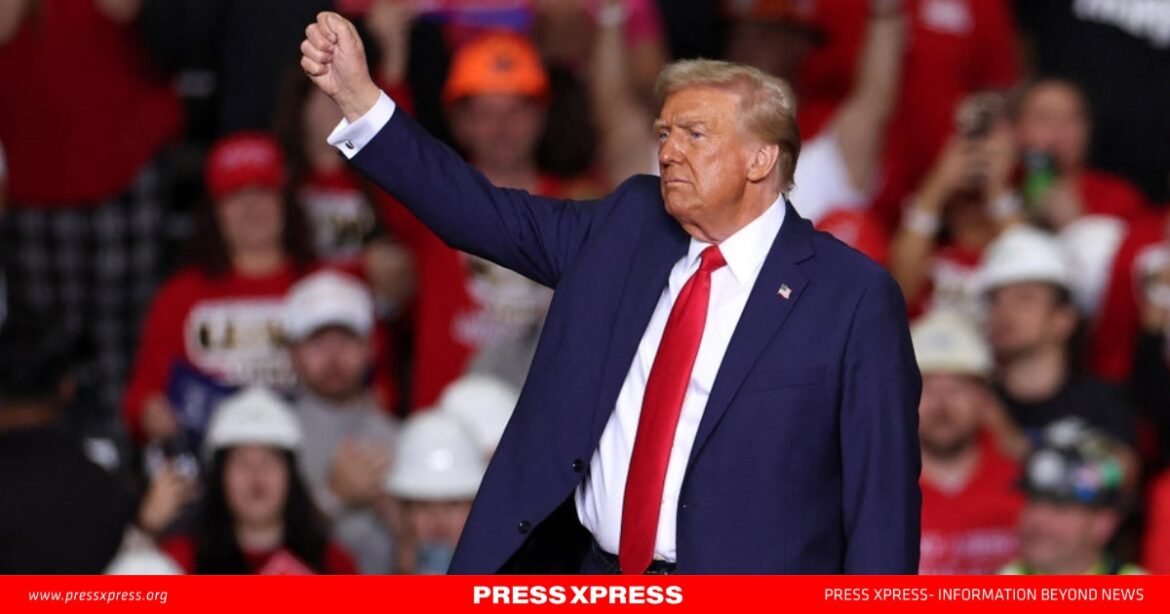Donald Trump’s incoming presidential administration has outlined an aggressive immigration enforcement plan, signaling the launch of the “largest domestic deportation operation in American history.” This policy, centered on nationwide raids and intensified deportation measures, carries significant implications for the U.S. economy, job markets, and immigrant seekers worldwide.
Domestic Economic and Job Market Implications
Trump’s plan to deport record numbers of immigrants and dismantle programs like the humanitarian parole initiative could disrupt key sectors of the U.S. economy. Immigrant labor is a cornerstone of industries such as agriculture, construction, hospitality, and healthcare. Removing large numbers of immigrant workers could result in labor shortages, increased production costs, and inflationary pressures on goods and services.
Labor Market Disruption: Immigrant workers, particularly those in low-skilled jobs, fill critical gaps in the labor market. Deporting these workers en masse may leave employers struggling to find replacements, potentially reducing output and profitability in affected industries. A ripple effect could extend to higher consumer prices and decreased economic growth.
Long-Term Economic Risks: The deterrent effect on future immigration could reduce the inflow of young, working-age individuals, exacerbating the challenges of an aging workforce and shrinking labor pool. This demographic shift could hinder economic dynamism and innovation.
Deportation During Trump’s 1st Term in Office
During Donald Trump’s first term in office (2017–2021), immigration enforcement was a key focus of his administration. During this period approximately 935,346 individuals were deported under the Trump administration.

Effect on Global Immigrant Communities
The proposed immigration policies will resonate far beyond U.S. borders, affecting immigrant seekers worldwide. Eliminating pathways like the humanitarian parole program will place hundreds of thousands of Cubans, Haitians, Nicaraguans, and Venezuelans in a precarious situation. Many will face prolonged uncertainty in temporary shelters or detention centers at the U.S.-Mexico border.
Increased Vulnerability for Asylum Seekers: Stricter asylum processing and deportation measures will exacerbate vulnerabilities for those fleeing violence and instability in their home countries. For many, the U.S. represents the last hope for safety and economic opportunity.
Strain on Third Countries: Trump’s plan to send deported individuals to “third countries” if their home nations refuse reentry adds pressure to nations already grappling with economic and social challenges. This strategy could lead to diplomatic friction and destabilize regions hosting deported migrants.
Ripple Effects on Migration Flows: The harsh enforcement measures may redirect migration flows, forcing individuals to seek alternative, often perilous, routes to other countries. This could strain neighboring nations’ resources and fuel a humanitarian crisis.
Political and Social Ramifications
Domestically, Trump’s hardline approach to immigration risks deepening societal divides. While his supporters view the plan as a necessary step to uphold law and order, critics argue it undermines the nation’s values of inclusivity and compassion.
Globally, the policy could tarnish the U.S.’s image as a beacon of hope and opportunity. The perceived hostility towards immigrants might weaken America’s soft power, reducing its ability to foster goodwill and influence abroad.
Balancing Enforcement and Economic Stability
While immigration enforcement is a legitimate policy objective, it must be balanced with economic realities and humanitarian considerations. Policymakers should weigh the potential economic costs against the perceived benefits of stricter immigration controls. Investing in comprehensive immigration reform—including pathways to citizenship and targeted enforcement—could achieve security objectives without jeopardizing economic stability or global standing.
Conclusion
Trump’s immigration enforcement plan represents a pivotal moment in U.S. policy, with far-reaching consequences for the economy, job markets, and immigrant seekers worldwide. Its implementation will test the balance between upholding national sovereignty and preserving the nation’s economic vitality and moral leadership. As the administration begins its term, the global and domestic implications of these measures will demand careful scrutiny and a nuanced approach.


